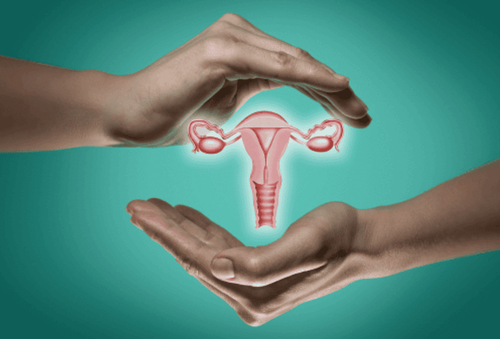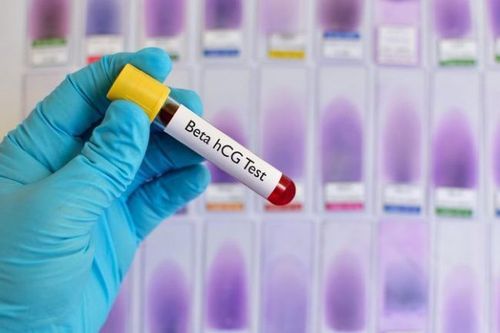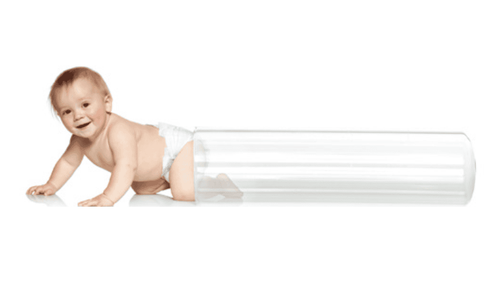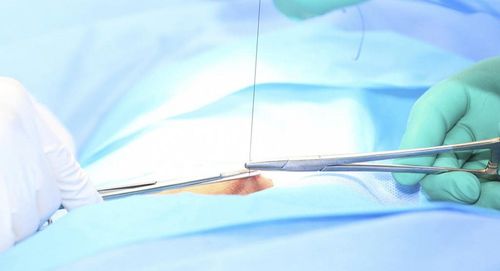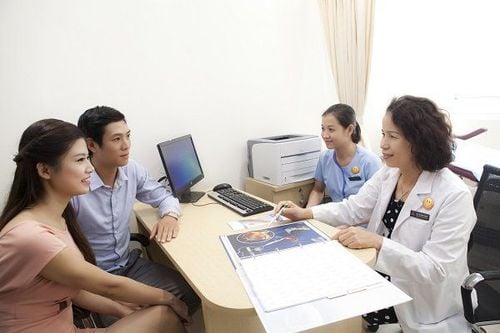This is an automatically translated article.
Pregnancy is a mother's gift, but not all women can easily do this. For some infertile couples, the desire to have a baby is always a desire. With modern techniques like IVF this can be done, not just once but many different times. However, considering to have another baby by IVF technique again always needs to be considered by couples. Here are some questions to consider before doing another IVF
1. Questions to consider before doing IVF again?
For families who have had a child with IVF and are planning to have another baby, a question often arises about deciding whether to try using frozen embryos. generated after the first egg retrieval or not. Although embryo transfer requires several months of preparation, it requires a patient commitment of time. The patient will also need an ultrasound scan of the reproductive organs and blood tests (among other tests) to determine if there is a possibility of another embryo transfer.
However, usually with infertile couples, time is an issue to think about because they don't have much time to wait. The decision to get pregnant again using IVF is a long process and requires a strong commitment between the patient and the doctor. Because this whole journey will be very difficult and the patient needs to work through each column of the process. These are the questions patients need to ask before starting IVF:
Is this the right time to get pregnant again? And is this the "right" time to have a baby? What is the probability of a successful IVF pregnancy again? Pregnancy is not guaranteed, even if IVF has been done before. That is a difficult fact to accept. Do you need to spend a lot of time in the treatment process? Thing process. IVF treatment will require a commitment to treatment time and if you have a young child to care for, you need to schedule good time for family, work and treatment. Do you really want to have a baby with IVF? Do you have enough money to have another baby through IVF? IVF is expensive. These costs will be burdensome for many and need to be prepared for this. Where can you get some help with this?

Các cặp vợ chồng nên tìm hiểu kỹ trước khi quyết định làm IVF thêm một lần nữa
The process of doing IVF is not simply putting an embryo in your uterus, it takes a lot of preparation in advance. You will have to use a lot of drugs as well as need a lot of time for this process. Just because you've had success with a previous IVF birth doesn't mean you'll be successful with the second. You will probably also experience a range of emotions during treatment. It is best to discuss with your fertility doctor for advice and support in deciding to do a second IVF.
2. What is the probability of success of the second IVF after a child is born using IVF technique?
Perhaps this is the most important and most asked question. Women have a chance to have a second child if they receive support for infertility treatment after giving birth to their first child by using assisted reproductive technology. The first study to investigate the chances of a second pregnancy with IVF, published in the journal Human Reproduction, answers this difficult question.
Researchers in Australia calculate that after a woman successfully conceives with in vitro fertilization (IVF), also known as assisted reproductive technology (ART), her chances of having a baby Second ART was between 51% and 88% after six cycles of treatment. These calculations depend on whether previously frozen embryos or fresh embryos from a new ovarian stimulation cycle are used, and are based on assumptions about likely success rates for women stop treatment.
The chance of having a second ART baby decreases as maternal age increases. Compared with women under the age of 30, women 35-39 years old with a second child were 22% less likely to conceive with ART if they suggested treatment with frozen embryos from a previous cycle, and by 50% if they proposed treatment with a new cycle and a fresh embryo. Factors that improve the chances of a successful second pregnancy include requiring only one cycle and a single embryo transfer to achieve the first delivery and predisposing factors for infertility. male.
Although many parents want to have more than one child, there have been no published reports on the chances of achieving a second ART conception child after the first ART child to date. The researchers hope that this information can be used to advise patients.
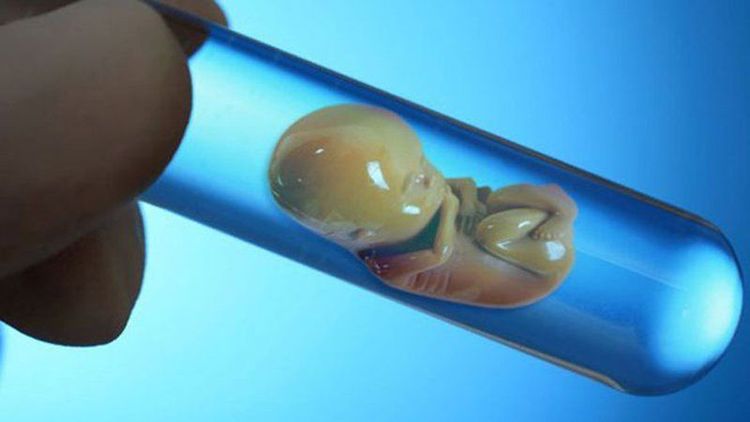
Cơ hội sinh em bé ART thứ hai giảm khi tuổi mẹ tăng lên
Professor Georgina Chambers, Director of the National Perinatal Epidemiology and Statistics Unit at the University of New South Wales (Sydney, Australia), reviewed data from 35,290 women who received ART between 2009 and 2013 in Australia and New Zealand and live birth during this time. These women were followed for a further two years through 2015, providing two to seven years of follow-up data, and live births as of October 2016 were included.
"We calculated two measures: what is a woman's chance of having a second child in a particular treatment cycle if previous cycles have been unsuccessful, for example in cycle three if two first cycle failed; and overall what is, or cumulatively, a woman's chance of having a baby after a specific number of cycles, including all previous cycles. of a woman having a baby after up to three cycles," said Professor Chambers.
A cycle that includes stimulation of the ovaries to mature multiple eggs, collection of eggs for fertilization in a laboratory to create embryos, and then all embryo transfer procedures using embryos from egg retrieval . This may include fresh embryo transfer and frozen embryo transfer.
Professor Chambers and her colleagues calculated cumulative live birth rate (CLBR) estimates for women trying to have a second ART baby, not just taking into account women who continue to treatment but also those who have stopped treatment. Just over 43% (15,325) of 35,290 women, with an average age of 36, returned to treatment to conceive a second child in December 2015.
Of these women, 73% had used it. using frozen embryos from the oocyte cycle yielded their first child, and for them, CLBRs ranged from 61% (conservative estimate) to 88% (optimal estimate) after six cycles. Among women who had a new cycle of stimulation and used fresh embryos, the CLBR ranged from 51% to 70%.
"Overall, 43% of women who start treatment with one of the frozen embryos from a previous stimulation cycle will have a baby after their first embryo transfer procedure. Between 61% and 88% of those women This woman will have a baby after six cycles," said Professor Chambers. "Among those who start treatment with a new cycle of stimulation and transfer fresh embryos, 31% will have a baby after their first cycle and between 51% and 70% after six cycles."
Professor Chambers said: "Couples can be reassured by these numbers. Our findings also highlight the fact that ART treatment should be seen as a course of treatment, rather than just a cycle. single treatment cycle: if couples do not get pregnant during the first cycle, it is most likely to happen in the next cycle, however, it is best not to wait too long, especially if a cycle is needed. new stimulus period."

Điều trị ART nên được coi là một quá trình được thực hiện nhiều lần thay vì một chu kỳ duy nhất
Co-author Dr Devora Leiberman, fertility clinician at City Fertility, Sydney, added: "These results can be used to advise patients, but it's important to note that These are population estimates, and every couple is different.Our analysis did not take into account all of the individual factors that affect a woman's chance of success on ART, including the length of time she takes ART. Infertility time and body mass index Whether ART should be initiated or continued should ultimately be the decision of the fertility clinician and the patient, taking into account all medical and non-medical factors . But this study provides a range of outcomes that can be expected."
Another limitation is that in Australia and New Zealand, funded couples for infertility treatment are not limited in number of cycles. mothers' period or age, previous number of children, and factors such as maximum body mass index and smoking. Therefore, the findings may not be universal to other countries with less supportive funding sources for ART.
Customers can come to the Center for Reproductive Support - Vinmec International General Hospital. This is the leading center in Vietnam, which has developed and applied a comprehensive medical examination and treatment process, combining both gynecology and obstetrics and gynecology to provide the optimal method for each patient's case.
Advantages when customers choose Vinmec fertility center:
Equipped with modern equipment, clean air system according to international standards to ensure lab quality, single cabinet system to optimize quality embryo, improving the success rate for each cycle of artificial insemination. Implement most advanced assisted reproductive techniques in the world: ICSI (injection of sperm into the oocyte cytoplasm); support embryo escape membrane; Reproductive reserve: embryo freezing, sperm freezing, oocyte freezing to help customers take the initiative in giving birth at will, transferring embryos on day 5, minimizing pregnancy; male infertility techniques (PESA, MESA, TEFNA, TESE) Besides advanced reproductive support methods, a team of excellent doctors in the country and the world, with prestige and long-term experience in the field of infertility .
Please dial HOTLINE for more information or register for an appointment HERE. Download MyVinmec app to make appointments faster and to manage your bookings easily.
Reference source: babycenter.com




